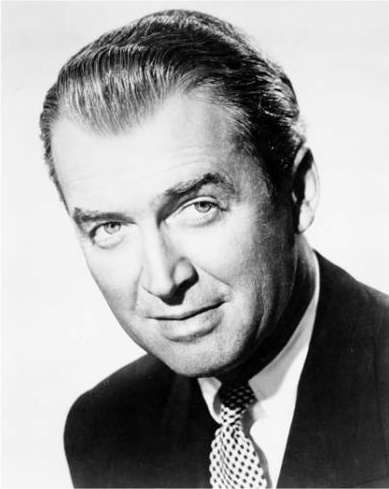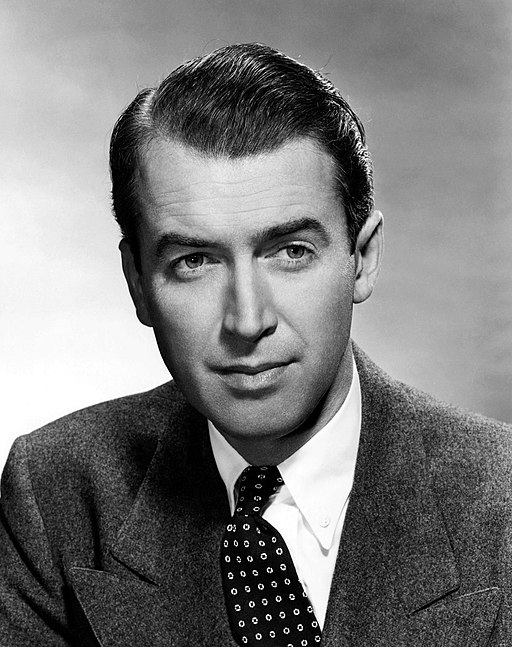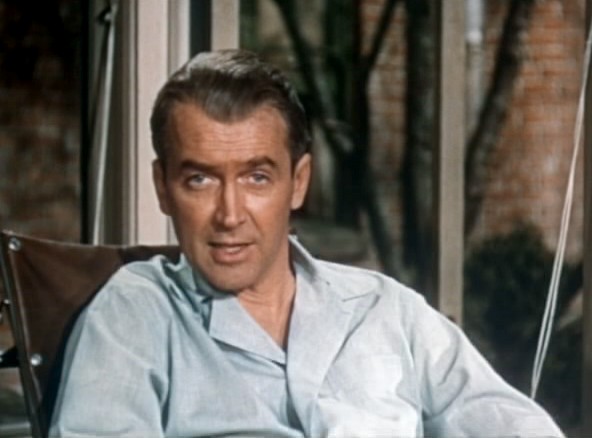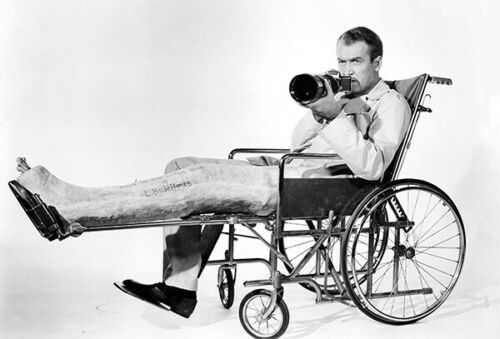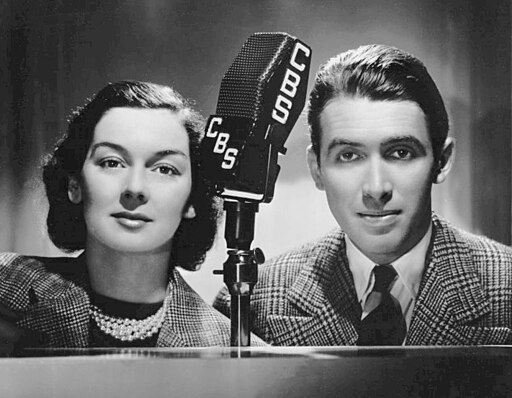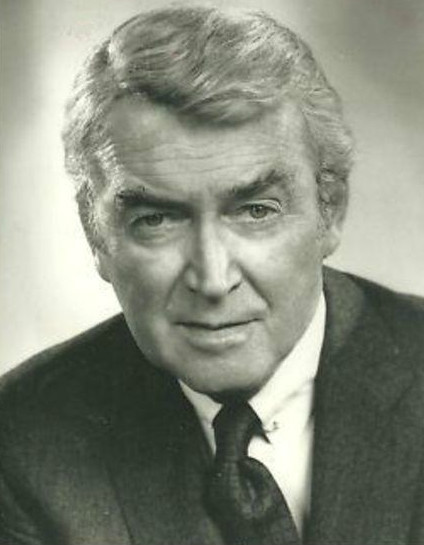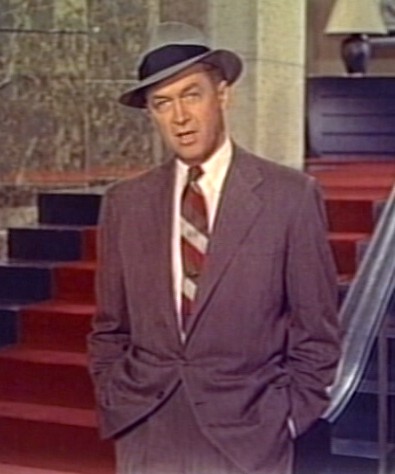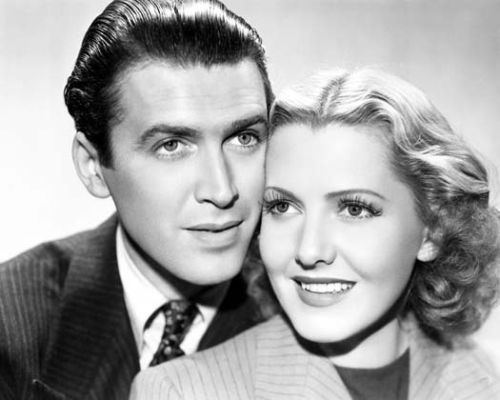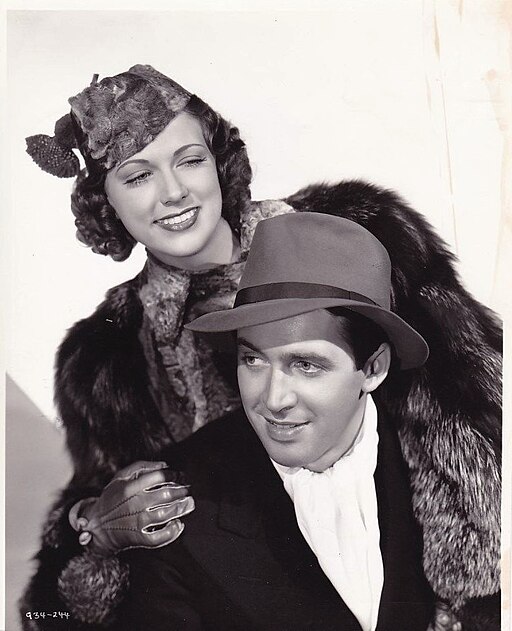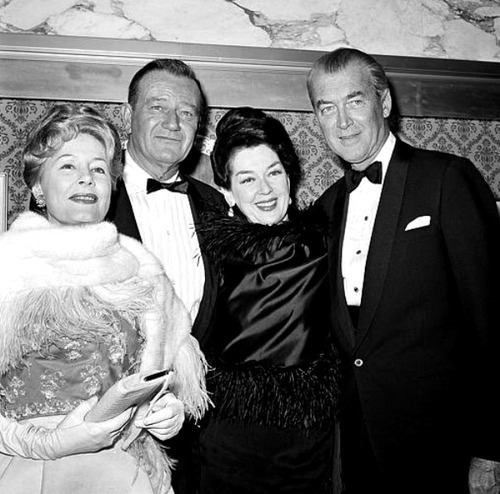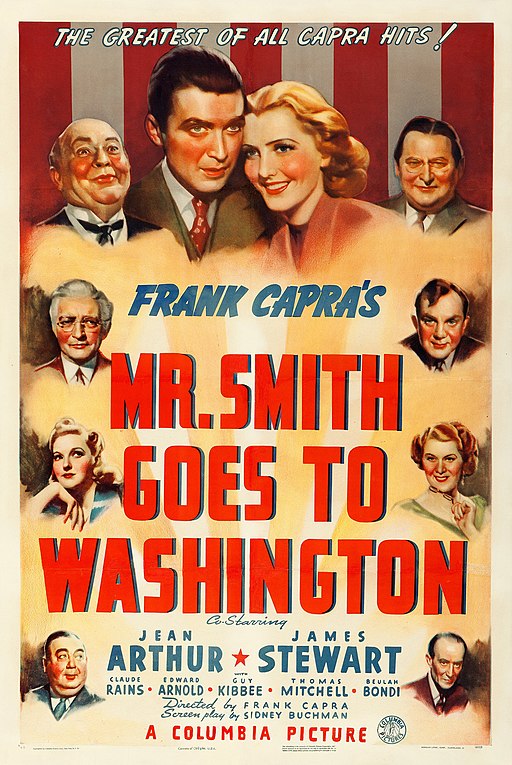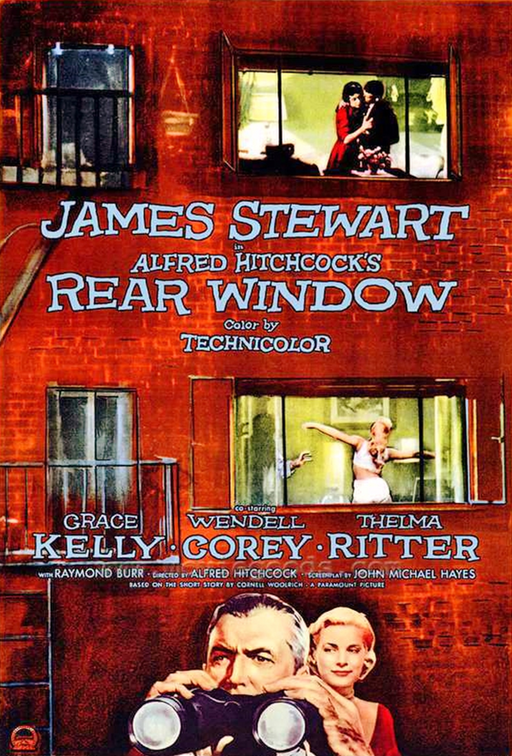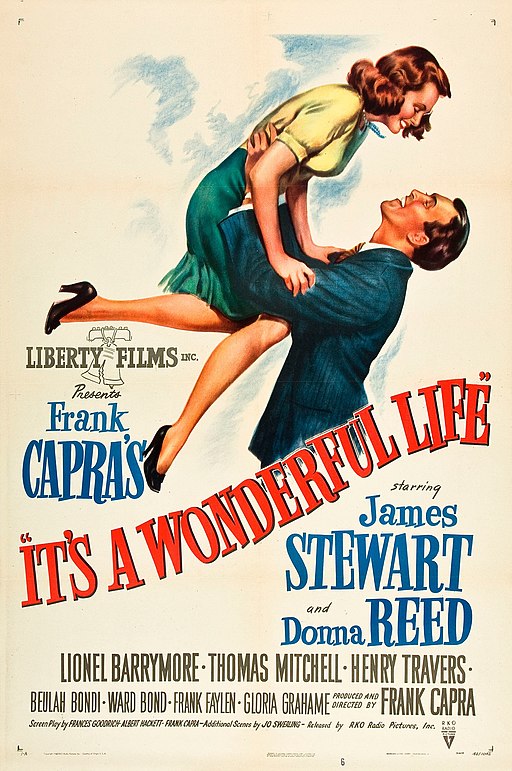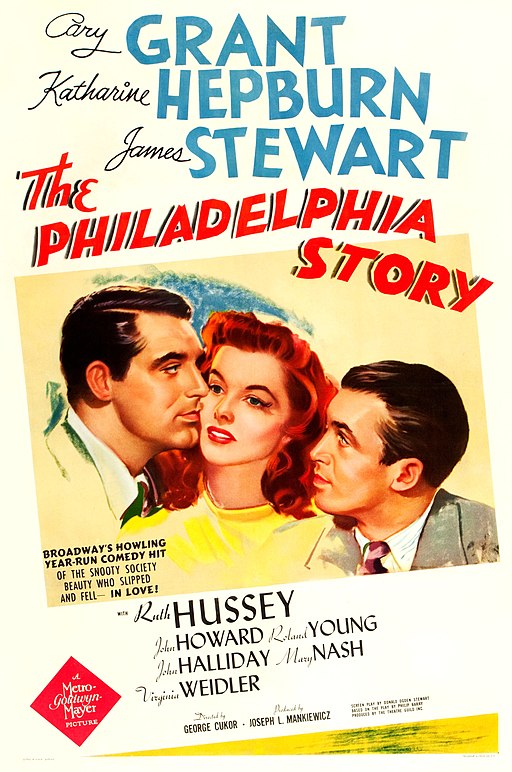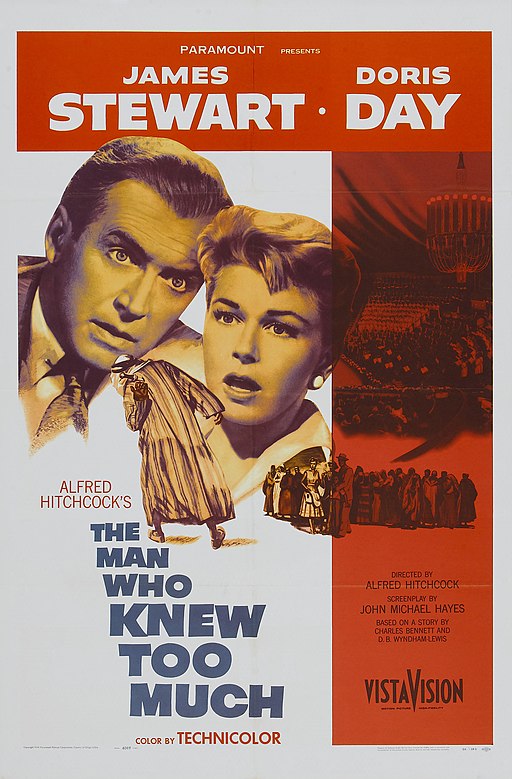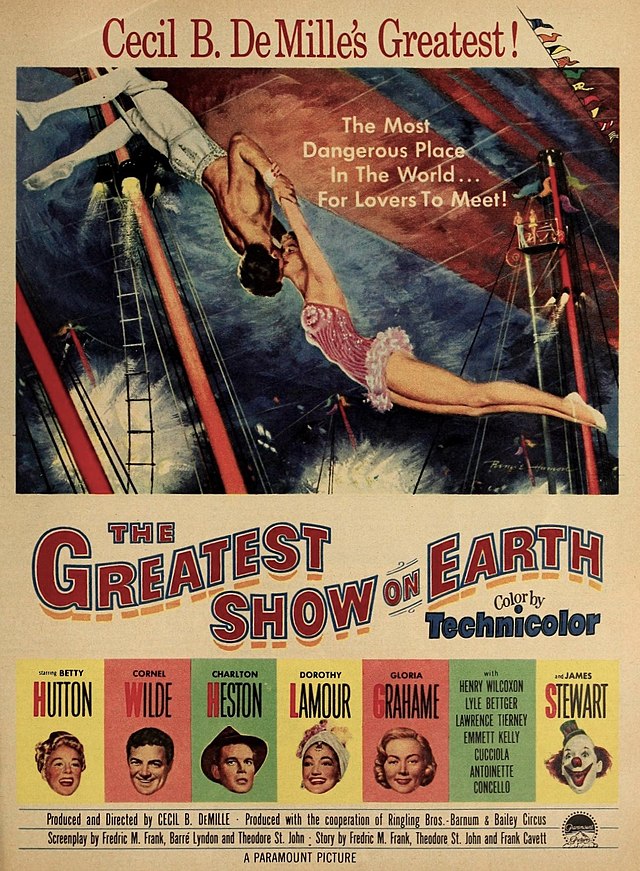James Stewart
back| Full Name | James Maitland Stewart |
| Stage Name | James Stewart |
| Born | May 20, 1908 |
| Birthplace | Indiana, Pennsylvania, U.S. |
| Died | July 2, 1997 |
| Buried | Forest Lawn Memorial Park, Glendale, California, U.S. |
| Married to | Gloria Hatrick McLean (m. 1949–1994, her death) |
| Children | Twin daughters, Judy and Kelly and two sons (adopted), Michael and Ronald (the latter was killed in action in Vietnam in 1969). |
| Notable films | Mr. Smith Goes to Washington - It's a Wonderful Life - Vertigo - Rear Window |
James Stewart
Hollywood’s splendid everyman
James Stewart, born James Maitland Stewart on May 20, 1908, in Indiana, Pennsylvania, was an iconic American actor known for his earnest everyman screen persona. His acting career spanned over four decades, during which he starred in many films that have since become classics. After graduating from Princeton University, Stewart began acting on Broadway before signing with MGM and making his film debut in 1935.
Stewart's early work included a series of lighthearted romantic comedies, but he earned critical acclaim for his performances in "Mr. Smith Goes to Washington" (1939) and "The Philadelphia Story" (1940), for which he won his only Academy Award for Best Actor. His career was interrupted by World War II, where he served with distinction as a bomber pilot and rose to the rank of brigadier general in the Air Force Reserve.
Post-war, Stewart's collaborations with directors such as Frank Capra and Alfred Hitchcock resulted in some of his most memorable roles in films like "It's a Wonderful Life" (1946) and "Vertigo" (1958). He adeptly transitioned from romantic leads to more complex, often tortured characters, showcasing a remarkable depth and versatility. Stewart remained active into the late 1970s, revered for his contributions to cinema. He passed away on July 2, 1997, leaving behind a legacy of quintessential American cinema.
James "Jimmy" Stewart was Hollywood's quintessential everyman, who with his distinctive drawl and relatable charm, embodied the spirit of American idealism and humility.
Related
James Stewart – Biography, analysis of his work and all his movies
James Maitland Stewart, known popularly as Jimmy Stewart, was an iconic figure of American cinema, celebrated for his distinctive drawl and everyman screen persona. Born on May 20, 1908, in Indiana, Pennsylvania, he had a stable, middle-class upbringing. Stewart’s interest in performing arts was sparked at a young age, but he initially pursued a degree in architecture at Princeton University. It was there, through university plays, that his passion for acting solidified.
Post-graduation, Stewart moved to Broadway, where he honed his craft before heading to Hollywood in the 1930s. His breakthrough came with Frank Capra’s “Mr. Smith Goes to Washington,” which earned him his first Academy Award nomination. Stewart's collaboration with Capra also led to his beloved role in the Christmas classic “It's a Wonderful Life.”
Stewart’s acting career was distinguished not only by his performances in comedies and dramas but also by his service during World War II. He enlisted in the United States Army Air Forces and flew missions as a bomber pilot, rising to the rank of Brigadier General in the Air Force Reserve.
After the war, Stewart returned to acting, demonstrating his range in westerns and suspense films, notably those directed by Alfred Hitchcock, including “Rear Window” and “Vertigo.” His performance in “The Philadelphia Story” won him an Academy Award for Best Actor.
Stewart’s personal life was marked by a long-standing marriage to Gloria Hatrick McLean and the tragic loss of their son Ronald in combat. A private man, Stewart was known for his integrity and down-to-earth nature, which echoed the roles he played on screen.
He continued acting into his later years, with notable performances in television and film, until he retired in the 1980s. For his contributions to film and the military, Stewart received numerous accolades, including an honorary Oscar, the Presidential Medal of Freedom, and induction into the Aviation Hall of Fame.
James Stewart passed away on July 2, 1997, at the age of 89, leaving behind a legacy as one of Hollywood’s greatest and most endearing stars. His filmography remains a testament to his talent, capturing the spirit of an America both innocent and wise, idealistic, and introspective.
James Stewart’s military career:
James Stewart had a notable military career that was highly distinguished and set him apart from many of his Hollywood contemporaries.
Commission and Early Service
Before the United States entered World War II, Stewart had already become a private pilot and enlisted in the U.S. Army in 1940. He was initially rejected for being underweight but eventually succeeded in enlisting by putting on the necessary pounds. Stewart was commissioned as a second lieutenant in the Air Corps.
World War II
He was 33 years old at the time of the Pearl Harbor attack, which was well beyond the age of someone expected to be drafted. Stewart, however, wanted to be sent overseas to fight. His celebrity status initially saw him relegated to stateside duties, but he pushed for operational service. He was eventually assigned to the 445th Bombardment Group of the Eighth Air Force in England.
Combat Missions
As a command pilot of a B-24, he flew 20 combat missions over Nazi-occupied Europe. He was known for his leadership and bravery on these dangerous missions, which included bombing runs over Berlin, Frankfurt, and other critical targets.
Promotions and Recognitions
Due to his skilled leadership, he rose through the ranks quickly. By the war's end, he was a colonel, one of the few Americans to rise from private to colonel in four years. Stewart continued his service in the United States Air Force Reserve after the war and was eventually promoted to Brigadier General in 1959.
Miltary Awards and Decorations
Stewart's military honors were numerous and included the Distinguished Flying Cross with two Oak Leaf clusters, the Air Medal with three Oak Leaf clusters, and the French Croix de Guerre with Palm.
Post-War Service
After World War II, he remained in the reserves and was an active participant in the Air Force Reserve, occasionally appearing in public service announcements to support the military. He was also a staunch advocate for the B-36 bomber during the post-war era.
Army Retirement
He retired from the Air Force on May 31, 1968, after 27 years of service.
Stewart's military career was a point of personal pride and was often cited as more important to him than his acting career. His service exemplified the same integrity, courage, and dedication that he portrayed in many of his film roles. Stewart's patriotic service contributed to his legacy as an American icon both in cinema and beyond.
Analysis of acting style of James Stewart:
James Stewart's acting style was noted for its naturalism and understated quality, which resonated deeply with audiences, making him one of the most beloved actors of his time. Here's an analysis of key aspects of his acting style:
Naturalism
Stewart had a knack for bringing a sense of realism to his roles. His performances often felt less like acting and more like a genuine person experiencing real emotions and situations. This naturalistic approach made his characters relatable and endearing to viewers.
Everyman Quality
Stewart often played "the everyman" with great success. He had an ability to portray characters that embodied the average American, with all the virtues, vices, struggles, and triumphs that entailed. This made his characters universally approachable and allowed audiences to see a bit of themselves in his roles.
Emotional Range
While Stewart’s manner appeared easygoing and laid-back, he displayed a remarkable emotional range when necessary. From the light-heartedness of romantic comedies to the intense despair in dramas, Stewart could navigate a wide spectrum of emotions, often within a single performance.
Voice and Diction
His distinctive voice, with its folksy drawl, was both comforting and familiar, but Stewart knew how to use it to great effect, whether for comedic timing, dramatic tension, or heartfelt moments.
Physicality
Stewart's tall, lanky frame contributed to his onscreen persona. He used his physicality to convey awkwardness or sincerity in comedic roles and to embody the common man in more dramatic parts. His movements were often characterized by a sort of ungainly grace, which was particularly effective in his everyman roles.
Subtlety and Complexity
Stewart's performances were often marked by a subtle complexity. He could convey the inner turmoil of a character without overt expressions of emotion, often using small gestures, facial expressions, or a change in vocal tone to express what the character was feeling.
Collaborations with Directors
His collaborations with directors like Frank Capra and Alfred Hitchcock also influenced his style. Capra brought out his idealistic, earnest side, while Hitchcock utilized Stewart's persona to subvert expectations, casting him in roles that had a darker, more obsessive edge.
Growth Over Time
Stewart's style evolved over his career. His early roles in the 1930s showcased his light comedic talents, while his post-war films reflected a deeper, more introspective style, mirroring the changed world and Stewart's own maturation.
James Stewart – His most notable movies
"Mr. Smith Goes to Washington" (1939):
Stewart plays Jefferson Smith, a naive and idealistic man who is appointed to the United States Senate and battles corruption in politics.
"The Philadelphia Story" (1940):
A socialite's ex-husband and a tabloid-type reporter turn up just before her planned remarriage, stirring up romantic confusion.
"It's a Wonderful Life" (1946):
Stewart is George Bailey, a man who has given up his dreams to help others, and whose imminent suicide on Christmas Eve brings about the intervention of his guardian angel.
"Rear Window" (1954):
A wheelchair-bound photographer spies on his neighbors from his apartment window and becomes convinced one of them has committed murder.
"The Man Who Knew Too Much" (1956):
A family vacationing in Morocco accidentally stumble on to an assassination plot and the conspirators are determined to prevent them from interfering.
"Vertigo" (1958):
A former police detective juggles wrestling with his personal demons and becoming obsessed with a hauntingly beautiful woman.
"The Flight of the Phoenix" (1965):
After a plane crash in the Sahara, one of the survivors says he's an airplane designer and they can make a flyable plane from the wreckage.
"The Shootist" (1976):
Stewart plays Doctor Hostetler in a film about an aging gunfighter who has been diagnosed with cancer and who wants to die in a dignified way. This was Stewart's final film role before his retirement from film acting.
Remarkable quotes from James Stewart:
- "I suppose people can relate to being me, while they dream about being John Wayne."
- "It's much more friendly with two."
- "Never treat your audience as customers, always as partners."
- "I've always liked the time before dawn because there's no one around to remind me who I'm supposed to be, so it's easier to remember who I am."
- "If you're going to build a better mousetrap, you're going to have to use a piece of cheese."
- "I consider myself a character actor. I think of that as an honorable title."
- "An actor does not really have to do much... to look into space and to look into the distance can be enough."
- "I feel it's important to have heard the music before you play it."
Analysis of his performance in the movie “It’s a Wonderful Life”:
James Stewart's performance in Frank Capra's "It's a Wonderful Life" (1946) is often cited as one of the finest in his career and a stellar example of his acting prowess.
In the film, Stewart plays George Bailey, a man whose life seems so desperate that he contemplates suicide. He is given the chance to see what the world would have been like without him by a guardian angel, Clarence. The character of George Bailey required Stewart to portray a wide range of emotions, from the joyousness of youth to the despair of a man who believes he has failed his family and his town.
Stewart's acting style in this film is naturalistic and deeply heartfelt, which was a signature of his performances. He had a knack for bringing an everyman quality to the roles he played, making them relatable and sympathetic. In "It's a Wonderful Life," his performance is particularly affecting because of how he captures the character's evolution and growing despair without overacting or melodrama.
A noteworthy aspect of Stewart's performance is his ability to switch between moments of light-heartedness and intense emotional depth. The scene on the bridge where George Bailey contemplates suicide is a powerful example. Stewart manages to convey a profound sense of hopelessness that is palpable to the audience. Yet, he does this without losing the inherent decency and likability of the character, which makes the audience root for him even more.
The final scenes of the movie showcase Stewart's capacity for portraying redemption and joy. When George Bailey realizes the impact he has had on his community, Stewart’s face lights up, embodying the character's relief and renewed zest for life. His genuine portrayal of gratitude and happiness contributes to the film's enduring appeal as a heartwarming tale.
Stewart's authentic and moving performance is often attributed to his personal experiences. Having served in World War II and suffering from what would now likely be called PTSD, he brought a certain depth and vulnerability to the role that might not have been as profound had it been played by another actor.
"It's a Wonderful Life" was not an immediate success upon release but grew in stature over the years, in no small part due to Stewart's indelible performance. His portrayal of George Bailey has become iconic, epitomizing the American ideals of decency, family, and the importance of the individual within a community. Stewart’s contribution to the film's legacy is incalculable, making it not just a Christmas classic, but a timeless piece of cinema that continues to resonate with audiences around the world.
Analyzing his role as Scottie Ferguson in Hitchcock’s “Vertigo”:
James Stewart's performance in Alfred Hitchcock's "Vertigo" (1958) is a significant departure from his "everyman" persona and is often considered one of his most complex roles. In the film, Stewart plays John "Scottie" Ferguson, a former police detective suffering from acrophobia (a fear of heights) and vertigo following a traumatic incident in the line of duty.
In "Vertigo," Stewart portrays a character who is haunted and obsessed, a far cry from the wholesome and upright figures he often played. His portrayal of Scottie is multifaceted; he manages to be both sympathetic and disturbing as his character becomes increasingly consumed by his obsession with the enigmatic Madeleine Elster, played by Kim Novak.
Stewart's acting style in this film is characterized by a sense of restraint and inner turmoil. His performance is subtle, yet he effectively conveys the psychological depth of his character. He portrays Scottie's fear and vertigo with a convincing physicality — the scenes on the rooftop and the bell tower are prime examples, where the audience viscerally feels his dizziness and panic.
As Scottie's obsession grows, Stewart presents a darker side, showcasing a range of emotions from infatuation to desperation to grief. One of the pivotal moments in the film is when Scottie's illusion is shattered, and Stewart executes this transformation from a romantic dreamer into a broken man with a compelling intensity. His expression of shock, betrayal, and sorrow at the film’s climax is both powerful and heart-wrenching.
Moreover, Stewart's chemistry with Novak is integral to the film. His portrayal of Scottie's transformation as he becomes fixated on recreating Madeleine in Judy (also played by Novak) showcases his ability to evoke both tenderness and a disturbing sense of control. Stewart's interactions with Novak's character(s) oscillate between loving and manipulative, painting a picture of a man who is both victim and perpetrator in his spiraling obsession.
"Vertigo" is a film about illusion and the destructive nature of obsession, and Stewart's performance is pivotal to its narrative power. He brings depth to a role that could easily have become one-dimensional in less capable hands. His ability to portray a fundamentally good man who succumbs to darker impulses makes the character's journey compelling and tragic.
Stewart's performance in "Vertigo" challenges the audience's perception of him as an actor and remains a testament to his versatility and skill. The film itself has grown in stature over time, much like Stewart's performance within it, and is now often cited as one of the greatest films ever made, with Stewart's portrayal of Scottie Ferguson being a central element of its enduring acclaim.
Awards and Nominations for James Stewart:
Academy Awards (Oscars):
Won: Best Actor for "The Philadelphia Story" (1941)
Nominated: Best Actor for "Mr. Smith Goes to Washington" (1940)
Nominated: Best Actor for "It's a Wonderful Life" (1947)
Nominated: Best Actor for "Harvey" (1951)
Nominated: Best Actor for "Anatomy of a Murder" (1960)
Honorary Award for "his fifty years of memorable performances, for his high ideals both on and off the screen, with the respect and affection of his colleagues." (1985)
Golden Globe Awards:
Won: Best Actor – Motion Picture Drama for "Anatomy of a Murder" (1960)
Cecil B. DeMille Award for "outstanding contributions to the world of entertainment" (1965)
BAFTA Awards:
Nominated: Best Foreign Actor for "Rear Window" (1955)
Nominated: Best Foreign Actor for "Vertigo" (1959)
Nominated: Best Foreign Actor for "Anatomy of a Murder" (1960)
Berlin International Film Festival:
Won: Silver Bear for Best Actor for "The Glenn Miller Story" (1954)
Venice Film Festival:
Won: Volpi Cup for Best Actor for "The Mortal Storm" (1940)
In addition to these, Stewart received numerous other accolades and honors throughout his career. He was also awarded the Presidential Medal of Freedom in 1985, which is one of the two highest civilian honors in the United States. Stewart's contributions to film were further commemorated with a Lifetime Achievement Award from the American Film Institute in 1980.
Complete list of movies with James Stewart:
1930s:
The Murder Man (1935)
Rose-Marie (1936)
Next Time We Love (1936)
Wife vs. Secretary (1936)
Small Town Girl (1936)
Speed (1936)
The Gorgeous Hussy (1936)
Born to Dance (1936)
After the Thin Man (1936)
Seventh Heaven (1937)
The Last Gangster (1937)
Navy Blue and Gold (1937)
Of Human Hearts (1938)
Vivacious Lady (1938)
The Shopworn Angel (1938)
You Can't Take It with You (1938)
Made for Each Other (1939)
It's a Wonderful World (1939)
Mr. Smith Goes to Washington (1939)
Destry Rides Again (1939)
1940s:
The Shop Around the Corner (1940)
The Mortal Storm (1940)
No Time for Comedy (1940)
The Philadelphia Story (1940)
Come Live with Me (1941)
Pot o' Gold (1941)
Ziegfeld Girl (1941)
It's a Wonderful Life (1946)
Magic Town (1947)
Call Northside 777 (1948)
Rope (1948)
You Gotta Stay Happy (1948)
The Stratton Story (1949)
Malaya (1949)
1950s:
Winchester '73 (1950)
Harvey (1950)
Broken Arrow (1950)
The Jackpot (1950)
No Highway in the Sky (1951)
The Greatest Show on Earth (1952)
Bend of the River (1952)
Carbine Williams (1952)
The Naked Spur (1953)
Thunder Bay (1953)
The Glenn Miller Story (1954)
Rear Window (1954)
The Far Country (1954)
Strategic Air Command (1955)
The Man from Laramie (1955)
The Man Who Knew Too Much (1956)
The Spirit of St. Louis (1957)
Night Passage (1957)
Vertigo (1958)
Bell, Book and Candle (1958)
Anatomy of a Murder (1959)
1960s:
The FBI Story (1959)
The Mountain Road (1960)
The Man Who Shot Liberty Valance (1962)
Mr. Hobbs Takes a Vacation (1962)
How the West Was Won (1962)
Take Her, She's Mine (1963)
Cheyenne Autumn (1964)
Dear Brigitte (1965)
Shenandoah (1965)
The Flight of the Phoenix (1965)
The Rare Breed (1966)
The Gnome-Mobile (1967)
Firecreek (1968)
Bandolero! (1968)
1970s:
The Cheyenne Social Club (1970)
Fools' Parade (1971)
The Shootist (1976)

